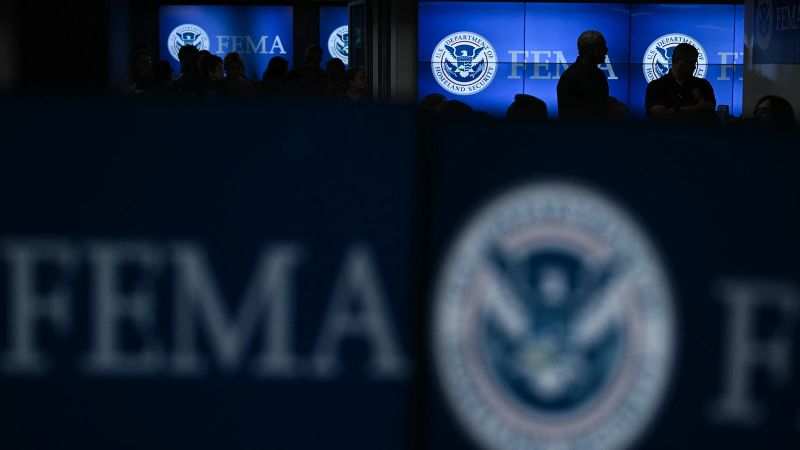The recent internal review from the Federal Emergency Management Agency (FEMA), obtained by CNN, paints a troubling picture of the agency’s readiness as the June 1 hurricane season approaches. The review indicates that preparations have significantly faltered, raising numerous red flags for potential disaster response in the upcoming months. Under the leadership of new acting Administrator David Richardson, the assessment reveals widespread concerns including a lack of coordination with state and federal entities, low morale among staff, and the hindrance of new bureaucratic protocols. The document bluntly states that FEMA is “not ready” for the impending hurricane season, a message that may alarm communities dependent on federal disaster assistance.
This internal assessment was issued at the directive of Richardson, a former Marine and current Department of Homeland Security official. It highlights an overarching uncertainty regarding FEMA’s mission and preparedness. Among the reported issues are inadequate training exercises, diminished agency morale compounded by public criticism from administration officials, and the diminishment of FEMA’s operational capacity, which has been exacerbated by significant staffing cuts. The report’s conclusions suggest that an atmosphere of fear and negativity pervades the agency, severely undermining its operational effectiveness.
Richardson’s appointment follows critical periods of upheaval at FEMA, including the termination of former acting administrator, Cameron Hamilton, who was dismissed after expressing opposition to proposals aimed at abolishing the agency. Since assuming leadership, Richardson’s stance appears aligned with President Donald Trump’s directives, focusing on transforming FEMA’s mission and reducing its operational footprint. In a meeting with FEMA staff, Richardson emphasized his authority and commitment to executing the president’s agenda. This imperative suggests that he may prioritize political goals over the agency’s core functions, which include ensuring disaster preparedness.
CNN previously aired concerns about FEMA’s hurricane preparations, but the internal review signifies a particularly distressing assessment just ahead of the season. Many essential tasks related to disaster readiness have reportedly been sidelined this year due to ongoing operational distractions. This lack of coordination between agencies and the halting of collaborative exercises with state-level partners could critically weaken FEMA’s response capacity when disasters strike.
Financial adjustments within FEMA complicate matters further. The agency, which has seen around 30% of its full-time workforce diminish, is experiencing significant financial constraints that affect its disaster response capabilities. Public-facing employees who are integral during disaster declarations now face individual approval processes for contract extensions, slowing operational responsiveness in critical periods. This bureaucratic delay exacerbates concerns about an impending lackluster response from FEMA when real-time action is vital.
In a broader strategic context, President Trump’s administration is evaluating ways to shift disaster responsibilities to states, which would likely increase the thresholds for qualifying for federal disaster assistance. Recent discussions among high-ranking officials suggest a deliberate move toward relegating more responsibilities onto states, especially those with robust emergency management infrastructures like California, Texas, and Florida. Smaller states might struggle under these new expectations, highlighting a disparity that could leave vulnerable communities inadequately supported during crises.
Rich tensions also exist within the federal structure above FEMA, as officials at the Department of Homeland Security exert considerable control over the agency. Homeland Security Secretary Kristi Noem has demonstrated a substantial influence on FEMA operations, including a controversial directive to pause payments for disaster relief to her home state of South Dakota, which further entrenches perceptions of political maneuvering impacting essential disaster assistance. Such political actions can damage morale and increase apprehension among FEMA’s workforce regarding the agency’s long-term viability and mission clarity.
In summary, the combination of political interference, drastic staff cuts, bureaucratic gridlock, and an uncertain mission creates a bleak forecast for FEMA’s performance in the upcoming hurricane season. With apprehensions resonating throughout the agency and a pressing need for external support on these pivotal issues, the expectations for competent disaster response are markedly diminished. If the current trajectory persists, the realization of effective disaster management and comprehensive readiness will remain a considerable challenge amidst an environment of unease and instability.



